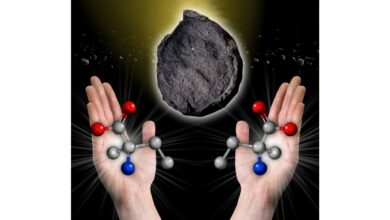Take a preventive approach to escape the tech labor trap


Engineering teams hate the same old thing: waking up at 3 a.m. to solve a laborious, relatively minor task like fixing a disk space problem. Dissatisfaction increases when skilled professionals are asked to perform basic activities that—in a more digitally mature operational environment—could be preemptively managed with automation.
A recent survey on the cost of downtime found that over 70% of IT leaders reported that recovery, mobilizing responders, collaborating across teams, and communicating internally with stakeholders are not yet fully automated. Other examples of relatively thankless, but essential, activities that can be automated include managing manual releases, processing recurring password resets, dealing with repeated identical alerts, or creating users on systems. Any task that an engineer can easily do but that provides little value and is not creative can be considered drudgery.
Teams that have to do this are at greater risk of burnout. That’s bad for the engineering experience and ultimately for employee turnover, company productivity, and profitability. Individual agency is important, and skilled technical talent should be able to use all of their cognitive resources to create a fulfilling work experience.
A more operationally mature organization can enable technical talent to work with automation and improve their operational maturity: preventative and proactive, enjoyable and sustainable. This is especially important for organizations looking to incorporate AI into their stack. AIOps creates a greater need to respond faster and ensure data integrity, security, and compliance at a rapid pace. So without automation, it’s hard to see how teams can ensure the rapid throughput and operational flow that a platform for stable, reliable AI outputs enables, let alone the agility to innovate as well.
Global Field CTO at PagerDuty.
Automation creates stability for AI
Leaders are increasingly embracing AI as a business tool that supports people, but engineers see the great value of automation as the foundation for ensuring the business delivers on its operational promises.
For the engineer, automation breaks the routine by removing the most common, burdensome, and low-value tasks from their remit. It can reduce the need for human oversight of routine tasks. Automation, often using AI, becomes an assistant that helps engineers solve larger, urgent, or strategic problems faster.
Automation assistance, often leveraging machine learning or AI within the codebase itself, can be used to create rules and runbooks that ensure technology fails gracefully, minimizing the number, size, and duration of incidents. Common, repeatable incidents should be analyzed and automated, creating a preventative mindset where the engineering team can learn from incidents while reducing the cognitive load of “firefighting.”
Without digital operational maturity ensured by automation, iterative AI adoption is unlikely to be a smooth process. Remember that AI solutions rarely meet user demands in their first incarnation. Being able to respond, upgrade, connect, and scale quickly is essential. Doing this at pace and protecting budget means managing the software engineering elements quickly and efficiently. Inevitably, automation will be needed to manage an always-on, always-connected, always-learning environment.
Automation is fundamental to resilient operations that can take managed risks while innovating services, based on a stable environment. Neither future AI nor existing staff can do smarter things if they do not have such a mature and reliable IT infrastructure to start with to ensure service levels to internal and external customers.
Managing the most critical asset: talent
Talent comes to software engineering to build and create things, not to grind and manage break-fix work. Using AI and automation to free people from the things that keep them busy, excited and productive is great for them and the business.
Many innovative and successful organizations share their best practices for engineering success. They do this because it is a well-established truth that engineering and tech talent generally operates differently than other business functions. General advice and best practices for people management only go so far. Great companies differentiate themselves on their engineering success. If talent is stuck using their expensive, professional skills on the shop floor, there comes a point where dissatisfaction and burnout set in and there may be no backup talent to step in when key personnel leave.
Day-to-day experiences for development and operations teams are crucial, but leaders also need to consider long-term career planning for their people. What skills, training, and challenges do they need in the next 2-3 years to solidify their expertise and feel valued, from where they are now? Burnout is a predictable consequence of poor digital maturity and toil. Planning to prevent it from the start is essential for employee and knowledge retention, and therefore business resilience.
Misaligned business and technology stakeholders are a common refrain in almost every organization, especially larger enterprises. While the analytical and problem-solving mindset of technical talent should solve some of the common causes of this, engaging the business as true partners is often the critical missing piece. Exceptional service delivery must be focused through the lens of business needs with exceptional communication to all stakeholders (including customers), not just technical delivery.
As teams address this unified view of service ownership and delivery, solutions such as sharing a common planning framework, layered goals, a shared vocabulary, and cross-functional teams using agile methodologies all offer solutions to universal problems.
As you move from the general to the specific, you should always keep the employee experience in mind. A key recurring question should be, “How do we empower people to be their most effective?” How will you measure that and what plans will you make to drive continuous improvement? The answer would be a well-planned career with room for them to focus on building, creating, and playing to their strengths. This means they can play a different tune and stay empowered, engaged, and productive.
Create a new playlist to keep you dancing
Drudgery, organizational digital immaturity, and a lack of career direction are all killers of engagement for technical talent. What’s more, these factors also prevent organizations from achieving their AI goals. We need a mindset shift that makes it unacceptable to spend too much time solving problems and keeping the lights on. Organizations that focus on leveraging automation to remove drudgery, reduce risk, and increase velocity will find that they get more value from their AI investments by playing to their engineering team’s strengths – accelerating delivery, aiding creativity, and building the solutions their customers need.
We provide an overview of the best collaboration platforms for teams.
This article was produced as part of TechRadarPro’s Expert Insights channel, where we showcase the best and brightest minds in the technology sector today. The views expressed here are those of the author and do not necessarily represent those of TechRadarPro or Future plc. If you’re interested in contributing, you can read more here:




